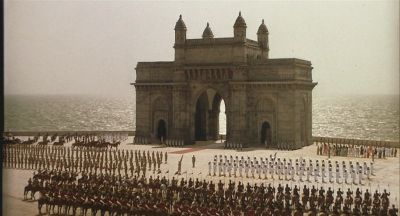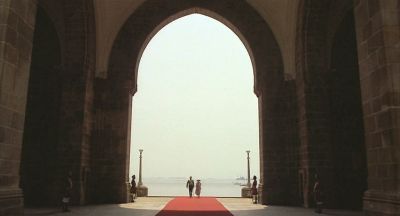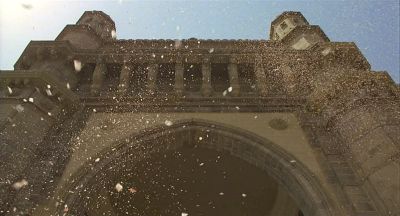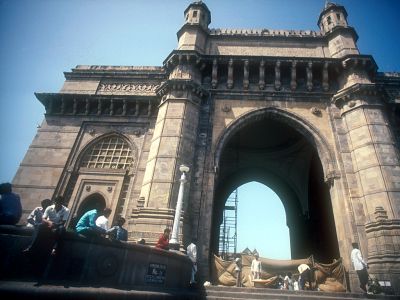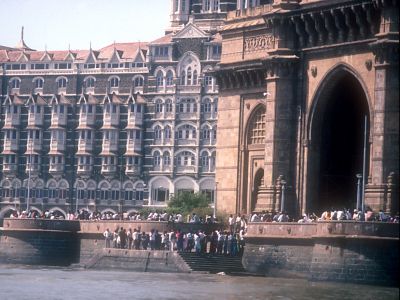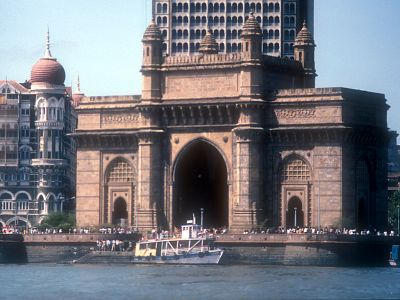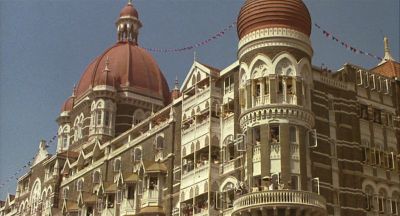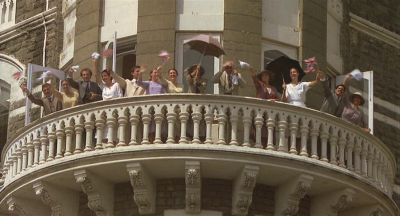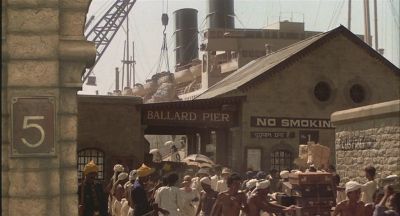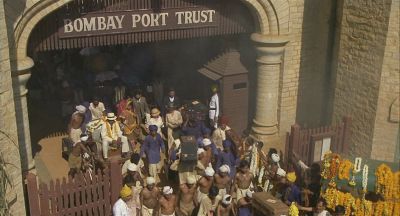Bombay
The film quickly moves from the rainy streets of London to the intense sun, so characteristic of India. Mrs Moore and Adela Quested travel by P&O (The Peninsular and Oriental Steam Navigation Company) steamer from Southampton. A typical route would have been via Gibraltar, Algiers, Marseilles, Malta, Port Said, and Aden, to Bombay. Their voyage was made more lively by the presence of the Viceroy, and the opening shot in Bombay shows the Gateway of India, with mounted troops ready to welcome him.
In his biography of David Lean, Kevin Brownlow writes: 'The most intricate model was for the matte shot at the beginning where you get the Gateway of India. That was a triple matte shot. The sea had to be matted at the back, because that's now a dry-dock area, then the Gateway itself and then the square in front of it where you see the British troops. That is not an open space, but a garden with a statue [Sivaji, 1960] and parked cars. That part of the matte, with the troops, was shot in Delhi, the Viceroy coming through it in Bombay.'
Here you can see the The Gateway of India and the nearby Taj Mahal Hotel as they were in 1992. The original red-domed hotel has now been adjoined by a modern skyscraper, the Taj Mahal Inter-Continental. Both have a splendid view east towards Elephanta Island. In the past, the Gateway used to be the arrival point for visitors from the West. The last British troops to leave India, the First Battalion of the Somerset Light Infantry, passed through the gate in a ceremony on February 28, 1948.
The Gateway of India, designed by George Wittet, was built in 1911 to commemorate the visit of King George V and Queen Mary to Bombay, prior to the Darbar in Delhi in December of that year. It stands on the Apollo Bunder, and is constructed from yellow Kharodi basalt with reinforced concrete. Primarily Indo-Saracenic in architectural style, there are, none the less, elements derived from the Muslim styles of 16th century Gujarat. The central dome is 48 feet in diameter and 82 feet high. The whole harbour front was realigned to come in line with a planned esplanade which was never built, due to a lack of funds, and so the Gateway now stands at a curious angle to the road leading up to it.
An aerial view of the Gateway of India and the Taj Mahal Hotels can be seen Here. (Note: This image was originally sourced from the http://www.photoatlas.com/ site, but it appears to have been replaced with a holding page since December 2006. Until the site comes back online, I have hosted the image myself.)
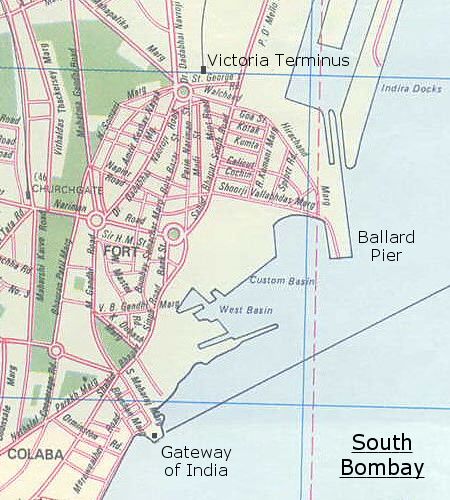
Map of South Bombay
It is 'artistic license' that showed passengers still on the P&O steamer watching the Viceroy and wife walk through the Gateway of India. Ballard Pier, where the steamer was berthed, is some way north of Apollo Bunder and the Gateway of India.
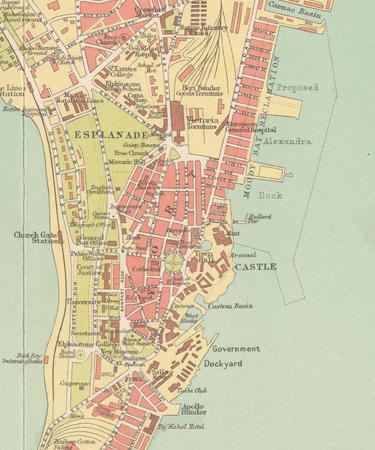
Map of South Bombay
Here is an older map of Bombay, taken from the J.G. Bartholomew Imperial Gazetteer of India 1907-1909 Volume 8. It shows the area before the Alexandra Dock (outlined in dotted lines) was built. The original Ballard Pier can be clearly seen, even further away from Apollo Bunder and the Gateway of India.
This mock-up of Ballard Pier and the steamship that Mrs Moore and Adela arrived on gives few clues as to the actual liner that the set was based on. P&O had many ships on the India-run in the 1920s and 30s. Click here to see some P&O postcards of the period. THe 'Moldavia' or the 'Mooltan' look similar.
I suspect that the mock-up of Ballard Pier and the Bombay Port Trust entrance were filmed on the artificial back-lot in Bangalore.

